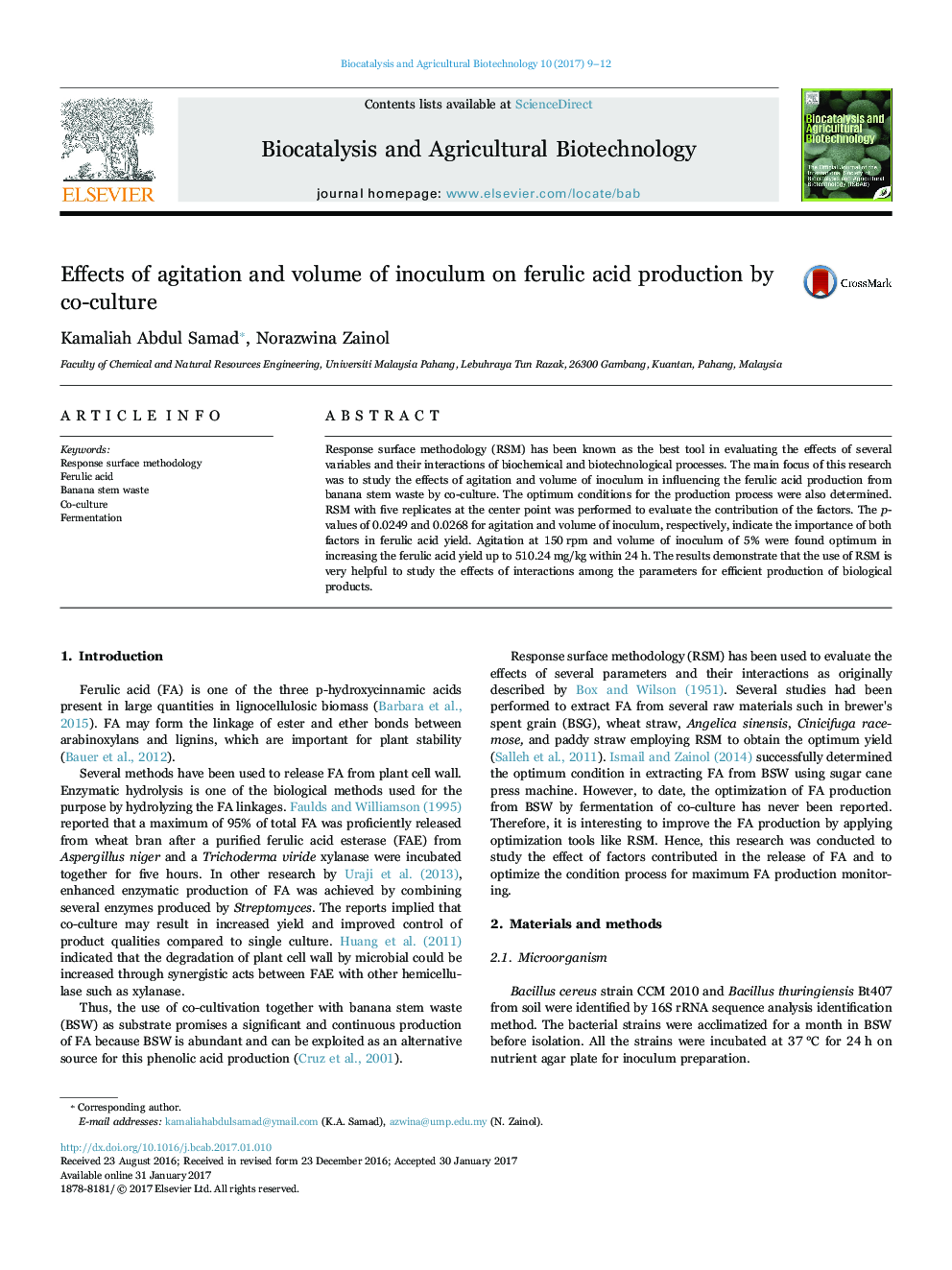| Article ID | Journal | Published Year | Pages | File Type |
|---|---|---|---|---|
| 5520443 | Biocatalysis and Agricultural Biotechnology | 2017 | 4 Pages |
â¢The interaction between agitation speed and volume of inoculum has improved the ferulic acid production.â¢A high correlation second order polynomial equation between observed and predicted response was developed for ferulic acid production.â¢The low p-values explained the significance of all factors in contributing to the ferulic acid yield.
Response surface methodology (RSM) has been known as the best tool in evaluating the effects of several variables and their interactions of biochemical and biotechnological processes. The main focus of this research was to study the effects of agitation and volume of inoculum in influencing the ferulic acid production from banana stem waste by co-culture. The optimum conditions for the production process were also determined. RSM with five replicates at the center point was performed to evaluate the contribution of the factors. The p-values of 0.0249 and 0.0268 for agitation and volume of inoculum, respectively, indicate the importance of both factors in ferulic acid yield. Agitation at 150Â rpm and volume of inoculum of 5% were found optimum in increasing the ferulic acid yield up to 510.24Â mg/kg within 24Â h. The results demonstrate that the use of RSM is very helpful to study the effects of interactions among the parameters for efficient production of biological products.
